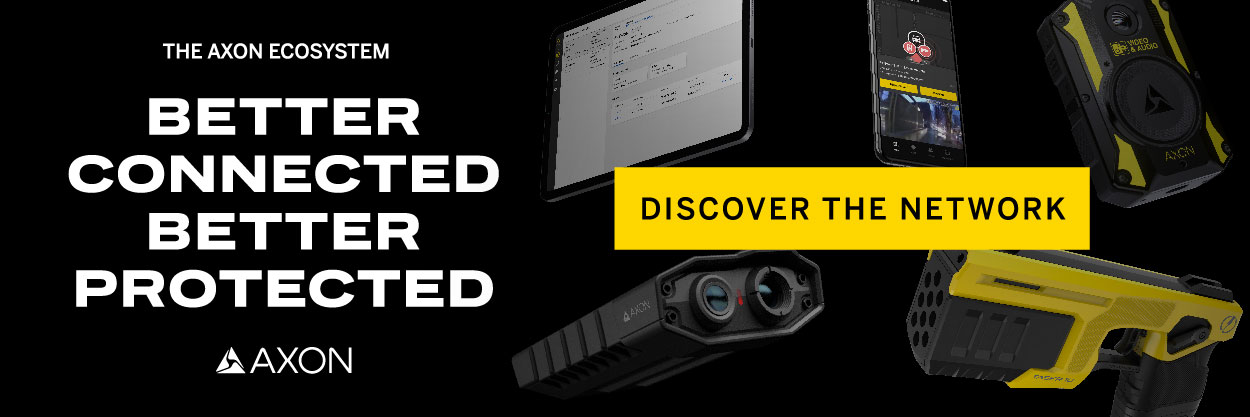Though they’re separated by a river, the United Kingdom counties of Kent and Essex have long been linked by their shared histories and similar demographics. Because of their geographical proximity, the police forces from each county often work together on cases that impact both forces.
I think now there’s a growing understanding that if we don’t engage proactively with really sophisticated technology solutions, we’ll find ourselves really running behind the curve when it comes to managing threats.”
D/Ch Supt Adam Ball
“Kent and Essex have a really strong relationship,” says Detective Chief Superintendent Adam Ball, who works for Kent Police. “They are two separate police forces independently, but we collaborate over some really important parts of our business,” such as human resources, strategic management of serious crime and IT.
The Kent and Essex police forces serve a vast territory described by D/Ch. Supt Ball as “the gateway to Europe”, with diverse communities that span city centres, coastal towns and everywhere in between.
“We have a lot of people coming in and out of the county, and of course, that means a lot of cross-border criminality that we have to deal with,” D/Ch. Supt Ball says.
Police Constable James Payne, a response officer for Essex Police, describes his community as “diverse in terms of economic standing.” As he puts it, “I have to look after [my community] to the best I can with all the tools that have been afforded me by the police service.”
One point on which D/Ch. Supt Ball and his colleagues overwhelmingly agree is the importance of investing in innovative technology to increase operational efficiency and stay ahead of evolving threats. “I think now there’s a growing understanding that if we don’t engage proactively with really sophisticated technology solutions, we’ll find ourselves really running behind the curve when it comes to managing threats,” D/Ch. Supt Ball explains. This makes a continual evaluation of the latest advances in technology a critical task for the partnered forces.
A collaborative approach to law enforcement
Because the forces often collaborate, they share frustrations about the time-consuming nature of collecting, storing and sharing evidence. Previous systems tended to be siloed and distributed, causing inefficiencies that could lead to delays in investigations. The varied systems could be cumbersome and time-consuming to manage due to compatibility issues, explains Detective Constable Edward Pegg of Kent Police, especially with “the different file types on USBs and on discs [and] hundreds of proprietary systems for whatever CCTV systems are used.”
Of course, digital evidence goes far beyond CCTV recordings in the modern era. In addition to security camera footage, the Kent and Essex forces are often handling files from body-worn video cameras, video doorbells, smartphones, and other sources, and incompatible systems could cause delays in resolution for victims and witnesses, while causing strains on force resources. It was clear that both forces’ evidence management solutions needed a streamlined approach, so the forces teamed up and underwent a thorough vendor evaluation process for a Digital Asset Management System (DAMS).
Building a DAMS
When it comes to procuring new technology, the Kent and Essex forces have several requirements that must be met before a decision can be made. Solutions need to comply with “local policing objectives for both forces,” deliver measurable value for the cost, be user-friendly enough to need minimal training, and come from a recognisable, proven brand. Previously, the evidence management process had been “disjointed and siloed,” resulting in wasted time and technical difficulties, D/Ch. Supt Ball explains. They needed a sophisticated digital asset management solution designed to unearth fresh insights and simplify the sharing process. Kent & Essex entered into an evaluation process with several vendors to find one that would fit their needs for a DAMS.
In addition to working with existing Axon systems like body-worn cameras and Interview Room, Axon Evidence integrates with computer-aided dispatch systems and external records management systems, allowing officers to manage information across a number of first-party and third-party sources
Why use the name “DAMS” instead of the more traditional DEMS, short for Digital Evidence Management System? Simple – because not every file being uploaded is ultimately going to be used as evidence in a courtroom, and may simply be an asset. “The material isn’t anything until you’ve identified whether you’re going to use it or not use it,” according to DC Pegg. “So essentially you divide it into evidence or unused material, which is how the Criminal Prosecution Service (CPS) expects us to categorise what we’re providing them.”
To make the comprehensive DAMS vision a reality, Kirsty Winter (Kent & Essex DAMS Product Owner) worked very closely with officers and staff to find out what they wanted to see in a solution: “We go out to our users and find out exactly what they would want from an integration, how it would work, really delve into the specifics, get them on board straight away… We then develop those requirements and work closely with our own colleagues who are dedicated to the integration work,” she says.
Once Kent and Essex had established their goals, they realised Axon Evidence fulfilled their requirements.
The DAMS team was determined to find a solution that was interoperable enough to support a number of planned integrations, and Axon Evidence fit the bill. Having already integrated Axon’s body-worn video cameras and TASER conducted energy devices into their set of technology solutions, leadership from both forces realised Axon Evidence was a natural way to tie all of their systems together. In addition to working with existing Axon systems like body-worn cameras and Interview Room, Axon Evidence integrates with computer-aided dispatch systems and external records management systems, allowing officers to manage information across a number of first-party and third-party sources.
Working with a known entity in UK policing helped ease any additional trepidation, D/Ch. Supt Ball says. “We paid for an off-the-shelf product that is tried and trusted, not just in the Kent [and Essex] police environment… but also known around the world as a trusted brand. And what that means is when it comes to delivery, we have officers that recognise and trust the brand.” D/Ch. Supt Ball also internally positioned the DAMS as a tool that would give staff more time back; as he told his team, “We’re going to use your time and your efficiency to invest in far more meaningful work that delivers justice for victims.” This approach proved successful, and the solution was implemented in September 2022.
A seamless implementation into the forces
A recurring theme among officers in the Kent and Essex forces is Axon Evidence’s ease of use. “I’m not particularly tech-savvy,” PC Payne says. “I’m not a whizz kid on the computer. However, I find it quite a user-friendly system. I couldn’t believe how easy it was.”
Kirsty Winter, who manages the team that responds to queries about DAMS, echoes PC Payne’s sentiment. “The user-friendliness has had a minimal impact on our IT and support colleagues,” she says. Out of the 8,500 officers and staff using the DAMS, help calls coming in to Mrs. Winter’s team average only single figures a day. “There’s a lot of resources out there, a lot of material out there that can help me find out what I need to know,” according to PC Payne. “I like to think it’s quite self-explanatory.”
What [officers] have been able to do now is to focus their time and energy on victim awareness, engagement, and meaningful statement-taking, supporting victims and witnesses through the criminal justice journey.”
D/Ch Supt Adam Ball
For his part, D/Ch. Supt Ball praised Axon Evidence as “a much smoother, much slicker, more efficient system. What this has done is allow us to consolidate [DAMS] behind one trusted brand that allows us to operationalise effective justice in the two counties,” he explains.
The ingestion process for digital video footage has proven to be a significant time-saver. “One of the benefits of Axon Evidence and everything being part of one ecosystem is the auto-ingestion aspect,” Winter says. “The fact that [officers] are not having to download footage from one product and then re-upload into another increases officer efficiency as well as helping to speed up the investigation process.”
Because Axon Evidence supports “quite a broad spectrum” of integrations, Mrs. Winter is still discovering new ways to tap into the system’s potential. One of her biggest priorities is integrating rapid video response calls, or “calls for particularly vulnerable victims who can have instant access to an officer. That really will have a huge benefit for speeding up those investigation types.” Additionally, Mrs. Winter is hoping to consolidate existing police systems such as 999/101 calls, record management systems, custody CCTV, and more.
A “Game changer” for evidence management
In the short time it’s been in use in Kent and Essex, Axon Evidence has already proven its value. As DC Pegg puts it, “I can’t overstate how much time it saves.” Mrs. Winter has heard Axon Evidence described as “a game changer for the management of digital evidence.”
In the first six months the DAMS was active, the forces saw over 350,000 pieces of footage uploaded or ingested into Axon Evidence. Meanwhile, over 50,000 requests for evidence have been sent out through Axon Community Request as part of the DAMS, potentially saving officers over 100,000 hours of time on what used to be inefficient processes to physically collect discs and USB sticks and the management and sharing of those discs/USB. Mrs. Winter also shares that as of April 2023 through Axon Evidence, Kent and Essex officers had shared over 300,000 pieces of evidence with various partners like the CPS, legal defence teams, courtroom colleagues, coroners, and more.
![]()
So what are the Kent and Essex police forces doing with the time saved by implementing Axon Evidence into their DAMS? “I think what [officers] have been able to do now is to focus their time and energy on victim awareness, engagement, and meaningful statement-taking, supporting victims and witnesses through the criminal justice journey,” D/Ch. Supt Ball says. “We’re much more accessible, engaged, and contactable, rather than potentially just driving around collecting various amounts of digital evidence.”
Digital Forensics Team Leader Andrew Marbrow has noticed a change across both departments since this system took effect. “On the whole, the impact has been immense. The feedback I’ve had from all over both forces has been extremely positive,” he says.
Looking to the future
With the successful implementation of Axon Evidence having made a noticeable positive impact on two neighbouring police forces, leaders at both Kent and Essex are already thinking about what’s next. Mr. Marbrow is already scoping out Axon Investigate’s forensically sound video playback solutions, and Mrs. Winter says that the team is “really excited to test and look at the new Axon Body 4,” the latest in Axon’s line of body-worn cameras.
“The future is really bright,” D/Ch. Supt Ball says. “A future that’s built on trust and confidence.”
To find out how Axon Evidence can modernise your force’s evidence management process while eliminating data silos, increasing efficiency, and helping better serve communities, get in touch.
Increasing Efficiency and Investing in Community Justice with Axon Evidence at Kent & Essex Police Forces from Axon Inc. on Vimeo.



